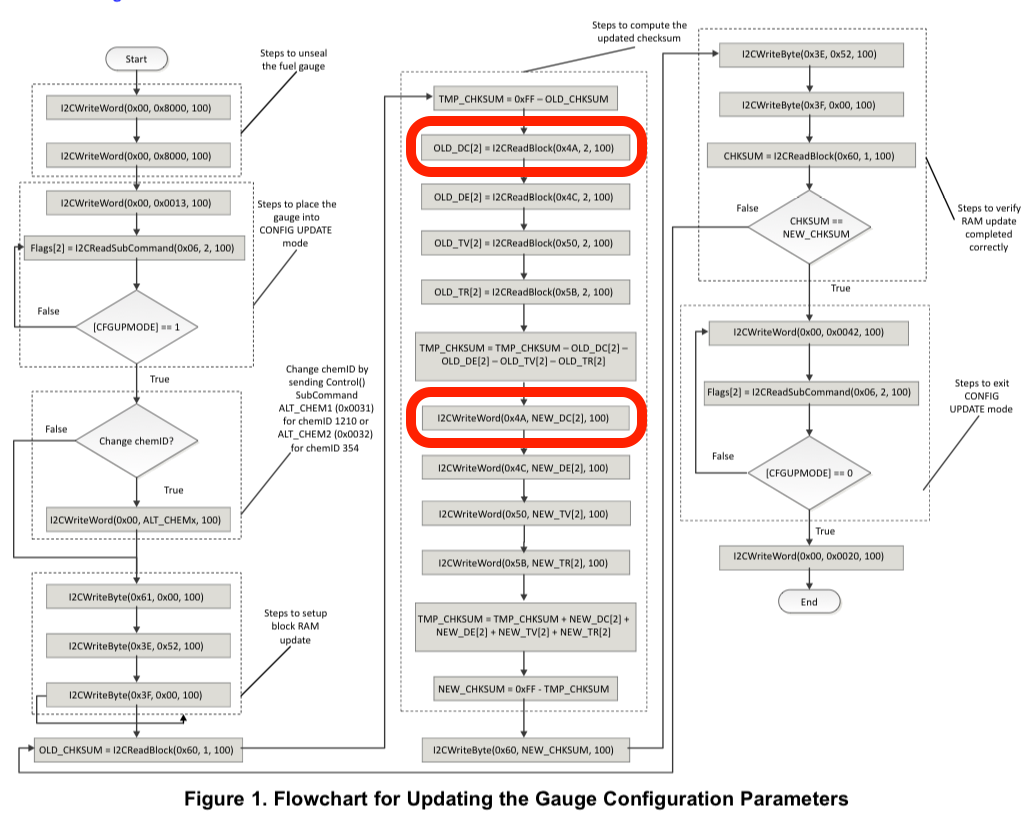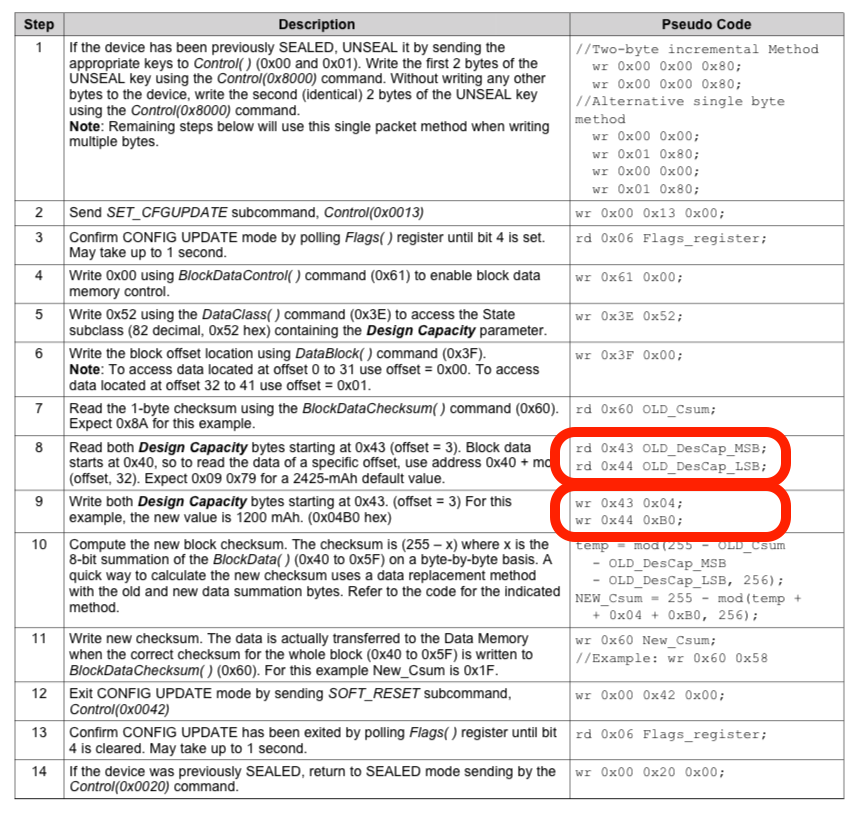Other Parts Discussed in Thread: BQSTUDIO
We're currently using a BQ27621-G1 gas gauge for a space constrained, low-powered device. The battery is 45mAh LiPo and average currents are ~5mA. The gas gauge is configured for the low capacity according to the scaling method.
This has worked fairly well in our tests, but we have had troubles getting the SoC up to 100% (it usually stops between 90 and 100%). This isn't much of an issue - we just consider anything >90% as fully charged. However, we are now receiving reports from customers where the SoC stops at 60%, even after charging the battery for more than 6 times the charge time. The battery is more or less brand new. We haven't been able to confirm that battery is at full capacity, but also see no reason why it shouldn't be.
Considering the road ahead, is it suggested to keep using the BQ27621 for this type of application and is there then a way to improve or diagnose the accuracy, or are the other more suitable gauges? (E.g. bq27426 or bq27220)



